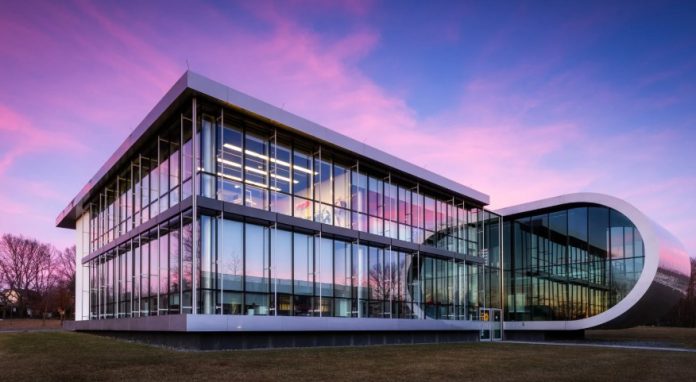Table of Contents
Indoor air quality has quietly become a frontline issue for commercial properties, especially as hybrid work models, health-focused design, and energy efficiency targets converge. Whether you’re a facility manager, architect, or sustainability consultant, you’re likely asking:
To ensure effective ventilation, what criteria should be met, and how can we meet them without compromising cost or compliance?
This guide unpacks the essential criteria for proper ventilation in business environments, aligning with UK regulations, sustainability goals, and the growing demand for healthier, smarter buildings.
Why Effective Ventilation Matters in Commercial Settings?

Poor ventilation isn’t just a comfort issue – it directly affects productivity, health, energy use, and long-term building performance.
Key Impacts of Inadequate Ventilation:
- Reduced cognitive performance due to CO₂ buildup
- Increased absenteeism from airborne illness exposure
- Violation of Part F Building Regulations
- Lower BREEAM and WELL certification scores
- Energy waste from inefficient or outdated systems.
A Harvard study found that better ventilation improves decision-making performance by up to 101%.
With indoor air quality now considered a business-critical factor, especially post-pandemic, the pressure is on to rethink how we manage airflow in commercial and public buildings.
Core Criteria: To Ensure Effective Ventilation, Which of the Following Criteria Should Be Met?
To meet modern building needs and stay compliant with building ventilation standards in the UK and there are several key factors must be addressed:
1. Airflow Rate & Distribution
-
- Must align with Part F of the Building Regulations
- Adequate air changes per hour (ACH) based on room function
- Even air distribution to avoid dead zones
| Space Type | Recommended ACH (UK) |
|---|---|
| Office | 4–6 |
| Meeting Room | 6–8 |
| Gym or Fitness Space | 6–10 |
2. Filtration Quality
-
- Use of high-grade filters (e.g., F7, HEPA) to remove PM2.5, VOCs, and microbes
- Filter replacement schedule must be maintained
3. Humidity Control
-
- Keep indoor humidity between 40–60%
- Prevents mould, corrosion, and dust mite proliferation
4. Energy Recovery
-
- Systems should retain heat from exhaust air
- Heat recovery efficiency should be ≥ 70%
- Aligns with sustainable ventilation solutions and BREEAM credits
5. Noise Level Compliance
-
- Commercial ventilation units must not exceed NR35–40 in offices
- Quiet systems improve focus and occupant satisfaction
6. Smart Controls & Monitoring
-
- Integration with Building Management Systems (BMS)
- CO₂, temperature, and humidity sensors for real-time adjustments
- Automated night purge and demand-based control for energy savings
From Compliance to Competitive Advantage: The Role of MVHR
Mechanical Ventilation with Heat Recovery (MVHR) is increasingly the go-to system for meeting these criteria in both new builds and retrofits.
Why MVHR Is the Smart Choice?
- Delivers fresh air continuously while retaining heat
- Improves energy performance rating
- Helps projects meet Part L & Part F requirements
- Compatible with smart building frameworks and IoT
- Ideal for offices, schools, apartment blocks, and other shared spaces.
Looking to integrate MVHR into your next project? Explore advanced MVHR solutions designed for commercial buildings and high-performance developments.
Future-Proofing with Ventilation: What Property Developers and Facility Managers Should Prioritize?
Considerations for Smart Building Projects
- Lifecycle costs: Invest in high-efficiency systems that reduce operating costs
- Occupant wellness: Ventilation plays a key role in WELL Building Standards
- Regulatory alignment: Systems must comply with current and upcoming UK building codes
- Space constraints: Compact units, ducting plans, and ceiling height matter.
Innovation Trends to Watch
- AI-powered airflow optimization
- Modular, plug-and-play duct systems
- Integration with solar-powered HVAC solutions.
Tip for SMEs: Even small office spaces benefit from decentralized MVHR or smart extractor fans, especially in high-occupancy or poorly ventilated rooms.
Breathe Smarter, Build Better
Effective ventilation is no longer optional, it’s a core component of healthy, sustainable, and regulatory-compliant buildings.
Let’s recap the essential criteria to ensure effective ventilation:
- Proper airflow and ACH levels
- Advanced filtration
- Humidity and CO₂ control
- Energy-efficient recovery
- Low noise levels
- Smart, adaptive systems.
By embracing these principles and integrating proven solutions like MVHR which your building can support productivity, reduce energy waste, and comply with UK standards now and into the future.
For property developers, consultants, and facility managers, now is the time to make ventilation a strategic investment, not just a regulatory checkbox.



